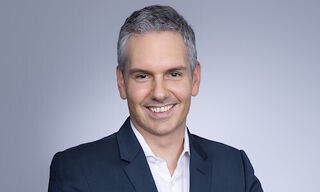UBS CIO - Getting Set For Rising Rates
After months of speculation all eyes, and ears, will be on the Federal Reserve in the next few days as the long awaited September meeting finally takes place.
In his latest CIO Note Mark Haefele, Global CIO, UBS Wealth Management sets out his view.
Getting set for rising rates: A quick recap:
Seven years on from the day of the Lehman Brothers collapse, we are approaching an important milestone: Thursday could be the first time that the US Federal Reserve raises rates in more than nine years. As we approach that date, I thought it would be useful to recap what the turning of the Fed interest rate cycle has meant historically for risk assets, and how we are thinking about the Fed decision this time.
The history:
Equities, broadly speaking, have performed positively on average in the six months after a Fed rate hike, and there is no clear statistical pattern that differentiates equity market performance during periods of rising rates from other periods.
Taking a simple average, emerging markets have actually delivered better performance than other regions over the past four hiking cycles, thanks to the strong performance in the 1986–1989 hiking cycle and in the 2004–2007 cycle. This may seem counterintuitive, given recent concerns around the "Fragile Five" and others, but it at least goes to show that higher US interest rates are not an unequivocal negative.
This time:
While it is important to keep an eye on history for context, we should of course note that interest rates have been on hold at record lows for a record length of time, so this is not an ordinary hiking cycle. Furthermore, the market is currently only pricing a 28% probability that the Fed will hike rates on Thursday. As such, we should expect that, in the very near term, a Fed decision to hike rates would lead to a re-pricing in the most sensitive assets, such as emerging market equities and currencies, higher yielding stocks, and the safest bonds. But, equally, a decision to remain on hold could lead to relief in these segments.
Therefore, rather than undertaking the impossible task of judging whether or not the Fed will move on Thursday and trading the decision itself, we are watching several factors closely to determine our positioning over the medium term:
- The business cycle:
We believe the US economy can stand firm in the face of steadily increasing rates. Household leverage has come down to 102% of income from 130% in 2007, while unemployment is low. Meanwhile, on the corporate site, only 16% of high yield bonds need to be refinanced before the end of 2018. Higher base rates would therefore not have an immediate impact on corporate or household disposable income.
Meanwhile, in the Eurozone and Japan, interest rates are likely to remain at record lows and central banks are pursuing quantitative easing programs. Provided they continue, this should insulate their economies from potentially tighter financial conditions.
Emerging market economies are clearly more vulnerable. But the effects are, to a large extent, already being felt. The spike in bond yields in mid-2013 sparked a tightening in financial conditions, which laid bare the need for painful reforms in many economies. We remain underweight emerging market equities in our tactical asset allocation, but see the current issues as symptomatic of a long-running malaise, rather than signs of an impending crisis.
In short, economic momentum is more important for equities than rate hikes. We remain clear in our view that, despite recent volatility, global economic growth remains on track. The US economy is in good enough shape to withstand higher rates; Eurozone growth should continue to improve, supported by loose monetary policy; and, while growth in China is slowing, there are enough signs of life, for example in property prices, to convince us that a "hard landing" is not imminent.
- The statement
Through its statement, the Fed will have an opportunity to put context around its decision. As such, even if the Fed increases interest rates, the market could interpret this positively, provided it reiterates its message that it will remain "data-dependent," and demonstrates that it will be patient before seeking to hike rates again. Equally, if the Fed chooses not to hike interest rates, an acknowledgment that it has taken recent instability into account could be taken positively.
We believe that with the Fed having taken seven years to try and get the US economy back on track, it is unlikely to jeopardize this through an ill-judged statement.
- The journey
Overall
With the business cycle intact and the Fed maintaining a growth-oriented stance as we head toward potentially the first interest rate hike in more than nine years, we remain confident in our positioning. We are overweight Eurozone and Japanese equities, and Eurozone and US high yield credit, and underweight emerging market and UK equities, and high grade bonds.


























